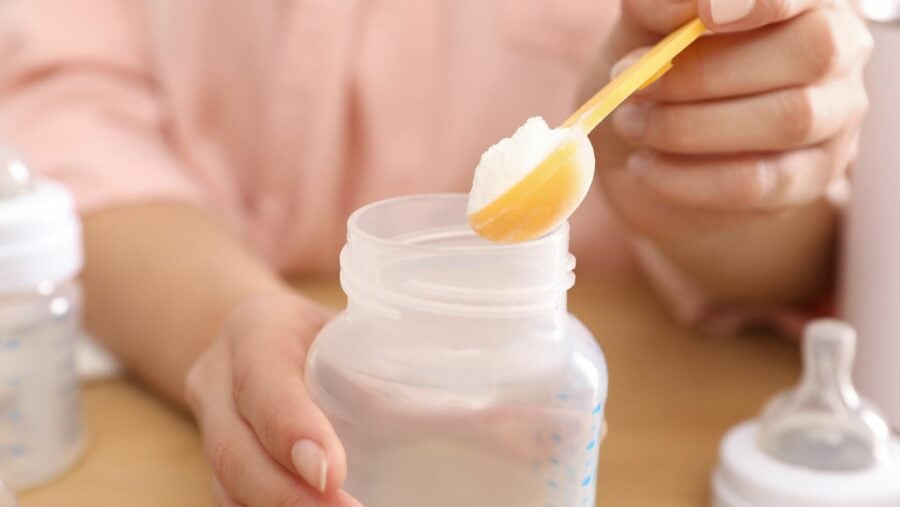To read the previous part, go to The Three Main Categories of Formula.
Updated article on April 2024.
There are many types of formulas, which I define below:
- Ready-to-serve formula: easy to use. Open the container, pour in the bottle and heat. More expensive to buy (almost double the price of concentrated or powdered formula). Liquid infant formula is sterilized by heat treatment. With infants with immune disorders or low birth weight, ready-to-serve formula is the safest choice because the formula is stable and has fewer possibilities for error, since it is already diluted.
- Concentrated formula: also easy to use. Mix one part water with one part concentrate, but you need to boil the water up to four months to eliminate bacteria. You need to handle it more and follow the manufacturer’s instructions for the proper nutritional concentration. Beyond preparation, there are also guidelines for storage to avoid cross-contamination.
- Powdered formula: also requires more handling and, above all, great care when making the mixture. Powdered milk is not recommended for premature babies or those with health problems, such as heart problems, babies with weakened immune systems or those who are underweight, as powdered milk is not sterile (source: Health Canada). It is imperative to follow Health Canada’s recommendations on the preparation and handling of powdered infant formula, to prevent contamination with various bacteria.
How to prepare a bottle of formula?
- Clean the formula container before opening it;
- Use sterilised bottles and nipples until 4 months (boiling water and air-dried; dishwasher using high heat; other sterilisers; sterilisation bag for the microwave);
- Boil the water for at least 2-5 minutes;
- Let the water cool for at least 30 minutes (should be warm-cold, not too hot) before mixing the concentrate or powder;
- Refrigerate after mixing.
Current research does not indicate that probiotics added to infant formulas help prevent things such as bloating, colic, obesity, infections or constipation. But it seems that probiotics help eczema in babies considered high risk for cow milk protein intolerance.
Beware of milk thickened with rice starch sometimes recommended by health professionals for a baby with reflux. In a situation of very important reflux in a baby, it will be preferable to change the milk for a hydrolyzed formula at first, instead of thickened milk to help the baby who is having bad digestive problems. After the trial of a few weeks with the hydrolyzed formula, an addition of an antacid medication could be suggested by the doctor in situations of persistence of symptoms in the baby and/or growth disorder. Note that thickened milk can prevent the absorption of antacid medication, therefore, in this sense, thickened milk are contraindicated.
Those are my remarks about formulas. I hope it helps you make your choice.
Talk to your caregiver before choosing if you need help.
Related articles:
Related videos:
Marie Fortier
The Baby Expert


